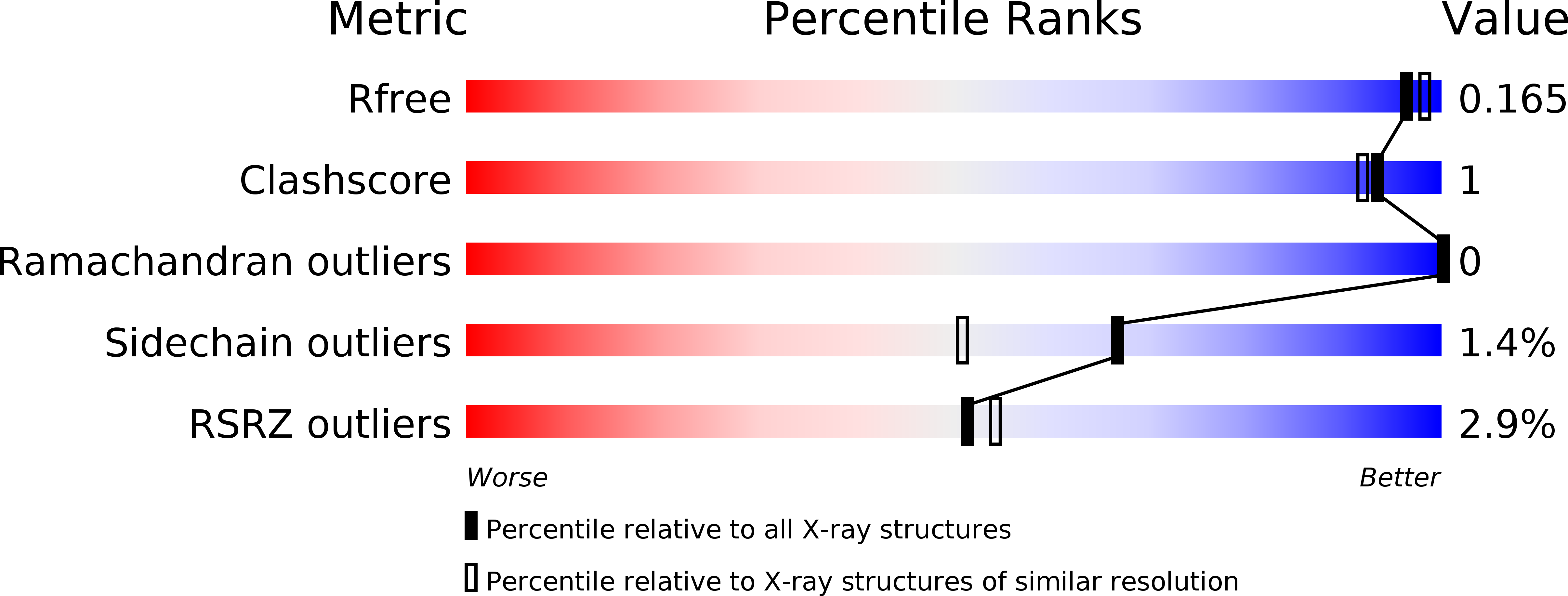
Deposition Date
2018-01-26
Release Date
2018-04-04
Last Version Date
2023-11-15
Entry Detail
PDB ID:
6C9B
Keywords:
Title:
The structure of MppP soaked with the products 4HKA and 2KA
Biological Source:
Source Organism:
Streptomyces wadayamensis (Taxon ID: 141454)
Host Organism:
Method Details:
Experimental Method:
Resolution:
1.69 Å
R-Value Free:
0.16
R-Value Work:
0.15
R-Value Observed:
0.15
Space Group:
P 21 21 21


